Royal Pardon for Alan Turing

Google’s Vint Cerf, an Internet pioneer, told BBC, "The royal pardon for Alan Turing rights a long-standing wrong and properly honours a man whose imagination and intellect made him legendary in our field.”Dr Alan Turing was an exceptional man with a brilliant mind. His brilliance was put into practice at Bletchley Park during the Second World War where he was pivotal to breaking the ‘Enigma’ code, helping to end the war and save thousands of lives.
His later life was overshadowed by his conviction for homosexual activity, a sentence we would now consider unjust and discriminatory and which has now been repealed.
Dr Turing deserves to be remembered and recognised for his fantastic contribution to the war effort and his legacy to science. A pardon from the Queen is a fitting tribute to an exceptional man.
News of the Pardon
Bio of Turing
Awards@FCC: Odd Ways of Recognizing Staff Excellence Continue
Long time readers may recall that FCC recognition of staff excellence has been a recurring topic here. For example in an August 2007 post we discussed how the Senior Executive Service bonuses that are an integral part of the compensation package for senior managers at FCC have become hidden even though they were public at other agencies and were very visible during the Fowler chairmanship in the 1980s.
We also pointed out that the Presidential Rank Awards, another integral part of compensation or senior federal managers have been rarely given at FCC since they were created in 1978. Until this year the only 2 FCC executives to be so recognized were James McKinney, former Chief of the Broadcast Bureau, and Jerry Vaughan, former Deputy Chief, WTB and a key figure in organizing the first spectrum auctions. (Mary Beth Richards who has worked several times at FCC received this award from the Federal Trade Commission for her work there before returning for another stint at FCC.)
Thus we were surprised to piece together recently the unannounced news that 2 key senior FCC staffers received the presidential rank awards, only the 3rd and 4th in 35 years, without any public announcement by FCC. Both are well deserved honors to long serving distinguished contributors to the FCC’s mission. FCC is now reviewing its administrative practices and has been “soliciting public input on improving the efficiency of how we conduct business here at the FCC”. We hope that the issue of award transparency will be considered in this review. The FCC blog recently stated
We hope readers respond to this call and ask for more effective recognition of outstanding work by career civil servants.“We plan to remain engaged with the public on ways in which the FCC can be more efficient and effective, and we encourage you to continue to submit your ideas to innovation@fcc.gov. We are always open to your thoughts and ideas.”
While the FCC made no announcement of these awards, here is a statement from Rep. Anna G. Eshoo that was in the May 16, 2013 Congressional Record:
OET Chief Julius Knapp

Last month, Julius Knapp, Chief of the Federal Communications
Commission's (FCC) Office of Engineering and Technology and a dedicated
agency employee for nearly 39 years, received the Distinguished
Executive Presidential Rank Award. This award recognizes Julius for his
ongoing work to unleash new technological innovation.
OSP Senior Economic Advisor Evan Kwerel

Mr. Speaker, I ask the entire House to join me in congratulating Julius Knapp and Evan Kwerel on receiving these very special awards and
for their dedicated years of service to the Federal Communications Commission and to the people of our nation whom they have served in an
exemplary fashion.
Now perhaps there was an understanding in the Administration to not announce these awards officially for some reason, although lists of the awardees were obtained by various newsletters. In addition, DOE, Air Force, and Army have announcements on their own websites about their awardees.
At the Commission’s September meeting, the almost annual Excellence in Engineering Awards were given out. In a November 2010 post here entitled “FCC Excellence in Engineering Awards: The Continuing Inattention to Publicizing Excellence” and a March 2008 post entitled “Excellence in Engineering: Why the Secrecy at FCC?” we pointed out the lack of information about these awards and how the analogous Excellence in Economic Analysis awards have often been better publicized. Well this year both awards got no public announcement other than what was said at the meeting. For the record here are this year’s winners. First 2 individual awards and then 2 team awards:
- Janet Young (WTB) - for work on PCS H Block Proceeding
- Timothy Harrington (OET) - for work on technical standards for cellular boosters (Docket 10-4)
- John Healy, Julia Tu, Michael Caiafa, Jerome Stanshine (PSHSB) - for report on derecho storm’s impacts to communications
- Gary Westby and Gregory Cunningham (EB-Detroit) - for study of how to measure power flux density in 700 MHz band at US/Canada international border
Our congratulations to all the awardees mentioned above for their contributions to advancing the telecom industry through dedicated public service. Let’s hope that in future years FCC doesn’t have to wait for bloggers to ferret out such news of staff excellence and contributions to the telecom community.
FCC Morale Continues to Improve According to Survey

Long time readers will recall that the Best Places to Work in the Federal Government program has been a recurring theme here. This was a Bush (43) Administration initiative that was ignored by the FCC leadership during that period. Since morale was high during the Powell chairmanship that is puzzling, but it is clear why the Martin chairmanship did not want any attention on employee attitudes.
FCC started participating in the 2009 survey and it is clear that there is a strong positive trend even though government-wide scores are decreasing:

FCC is considered a “mid-size agency” and now ranks 7 out of 23 such agencies. FCC was singled out for special praise this year in the report:
The Federal Communications Commission (FCC) is the most improved mid-size agency in the 2013 Best Places to Work in the Federal Government® rankings, moving from 10th of 22 agencies to 7th place out of 23.
The FCC, which regulates interstate and international communications by radio, television, wire, satellite and cable, has a Best Places to Work job and workplace satisfaction and commitment score of 71.3 out of 100, an increase of 4.6 points since last year.
In addition to increasing its overall score, the FCC improved employee satisfaction in seven of the 10 separate workplace categories that were measured.
The biggest gain was a 4.7-point increase in strategic management, which measures the extent to which employees believe management ensures they have the necessary skills and abilities to do their jobs. The FCC also jumped 3.8 points in its effective leadership score, which measures the extent to which employees believe leadership generates motivation and commitment, encourages integrity and manages people fairly.
My wife’s former employer, the Nuclear Regulatory Commission, used to be #1 government wide, but is now tied for 4th and is only slightly ahead of FCC in the mid-size category. FDIC with a score of 82.3 is the clear leader in the mid-size category, but #2 - #7, the group that includes FCC, has a relatively small spread in score between 77.2 and 71.3 . (In all fairness, FDIC is not your standard federal agency as it receives no appropriation and is supported directly by bank insurance fees. I believe that it has more discretion for internal spending that more normal agencies and thus may account for its higher score.)
Congratulations to the FCC leadership for continuing the improvement in employee morale and let’s hope they beat NRC next time!
UPDATE
Actually a non-update. In view of the nice words said about FCC in the report that are quoted above and its recognition of FCC’s as “most improved mid-size agency”, we are surprised there is no mention of the report on the FCC’s home page or its blog as of today 12/19/13.
UPDATE 2
A January 2, 2014 Washington Post article entitled “Tips from federal agencies with happy employees” has this additional information:
The Federal Communications Commission (FCC) also made positive strides, winning the ‘Best Places to Work’ most improved mid-size agency award in 2013, and moving from 10th out of 22 agencies to 7th out of 23 in the rankings.
After studying the federal survey used to compile the ‘Best Places to Work’ rankings, the FCC placed added emphasis on finding ways for management to better communicate with its more than 1,700 employees. The stepped-up communications included emails from the chairman and town hall meetings in various bureaus to highlight what the commission is doing and the valuable role played by employees. During performance reviews, managers also have talked about the importance of the mission and their workers’ contribution.
Oddly, as of the date of this article FCC has never said anything on its website or blog about this award. But then again, as we have written, FCC may just have an odd view to all awards!
Comm. Rosenworcel to Keynote IEEE GLOBECOM 2013

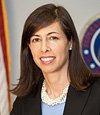
But I believe that this is the first time in over a decade that any FCC commissioner has spoken at any technical conference even though technical spectrum policy and Internet policy are key parts of the FCC jurisdiction. This same conference was held in Washington DC in 2007 during the Martin chairmanship and even with it in the FCC’s backyard they were unable to get an FCC commissioner to speak. The IEEE International Microwave Symposium, a major conference for wireless technology, was held in nearby Baltimore in 2011 and was unable to get an FCC commissioner to come despite repeated efforts.
So kudos to Comm. Rosenworcel for breaking with the past. OET Chief Julius Knapp will also speak at 2 sessions.
While the technical community does not have the same expectations as CTIA and NAB, some attention from the 8th Floor would show support to technical innovation and the capital formation that is needed for it. Indeed, such conferences can be a 2 way street for commissioners and senior staffers to meet people and hear things they normally don’t hear on the 8th Floor.
UPDATE
Here is the link to the prepared speech she gave.
The most interesting part of the speech was a proposal to bring FCC hiring of engineers to be the same high priority as hiring lawyers with recruiting at the start of the academic year. A topic discussed here last year. WE hope the rest of FCC can endorse this idea!
Do FCC NOIs/NPRMs Have Too Many Poorly Organized Questions?
A Comparison with Ofcom and IC
FCC NOIs and NPRMs tend to have lots of questions, generally very poorly organized questions. Why? It is the byproduct of the coordination between the various bureaus and offices within the FCC staff and then with the 5 commissioners. It is very easy for all of the above to raise concerns. The authors seek to by them off by adding another question, hence questions keep growing and growing. Since no one is really in charge, there is no accountability for adding a question and it is often the price of getting a concurrence that is needed to meet a deadline.
Questions with “seek comment” in Docket 09-157 NOI
Let’s consider the “Wireless Innovation NOI, Docket 09-157. How many questions are in this 24 page document? Let’s start by doing a search for question marks are shown in the page above. There are 167 questions that end in a question mark! There are even 2 questions in footnotes to other question! (fn. 53 & 69. Note that fn. 53 seems to be irrelevant to the rest of the NOI and possibly was just inserted in the wrong document.) Former Commissioner Copps had an additional 11 questions in his statement.
But that is not all. FCC staff also is fond of using the phrase “we seek comment” in sentences that do not end in a question make but still constitute questions. There are 40 questions that use this construction. Is that all? Of course not!
Here are some of the creative ways FCC staff has found to place questions in this document:
- Thus, we seek, as a general matter, comments regarding the spectrum requirements that are needed to foster innovation in wireless networks and systems (para. 25)
- In particular, we solicit comment on the extent to which secondary market transactions result in the introduction of new and innovative services. (para. 33)
- Commenters should, in particular, discuss how such information might be collected and made transparent to promote effective sharing.(para. 43)
- We encourage commenters to identify unlicensed technologies that may be under development, and to discuss how we can promote further innovations in the use of unlicensed spectrum under our Part 15 rules.(para.45)
- Accordingly, we encourage commenters to consider how policies for innovation in the wireless domestic market might appropriately reflect or support global innovation for international networks generally. By business model, we refer to a framework for converting technology to economic value. (para. 61)
The above accounting shows 223 questions! However, your blogger does not guarantee that number because of the creative ways FCC staff has to insert questions subtlety. Are there question numbers to help either
- the public in responding to them, or
- the public in dealing with reply comments, or
- even the FCC staff preparing comment summaries?
Of course not! Why number questions, it might make it more difficult to keep adding more and more as you do anything to meet the deadline to get the document out the door. (Yes, I have worked in the FCC “sausage factory” and seen how “sausages” are made.)
Well, maybe this is inevitable? Perhaps. But let’s look at FCC’s UK counterpart, Ofcom. Here is a recent Ofcom document, Spectrum management strategy: Ofcom’s approach to and priorities for spectrum management over the next ten years. This is a “consultation” in UK jargon - the functional equivalent of an NOI. This document has 13 question in its 100 pages, starting on p. 41. While the questions are somewhat scattered, they are easy to find because they are both numbered and appear in boxes with a halftone background in the text. To make sure you don’t miss any, they are repeated as a group on p. 95.
Example of an easily identifiable question in an Ofcom consultation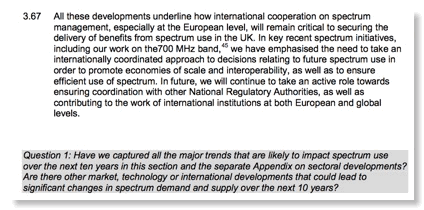
Note also that all the references in footnotes seem to be given as URLs so someone writing comments can find them quickly. Note that most of the FCC’s references in footnotes are given as proper legal references and few URLs are given even though they exist for statutes, FCC Rules, and past FCC decisions. Would heavy use of URLs be too advanced for a US legal institution like FCC?
Well, the North Dakota Supreme Court has been issuing decisions in actual hypertext for more than a decade, giving both the proper legal citation as well as a hyperlink for all references! For a sample NDSC decision, surf over to here. If people in Bismarck ND can figure this out, you would think that technical wonks regulating our communications infrastructure on 12th St., SW could!
So are Ofcom and the North Dakota Supreme Court the only entities that know how to make legal documents more accessible? Surf over to our northern neighbor and see how Industry Canada issues “consultations”. Here is an example: “Consultation on Considerations Relating to Transfers, Divisions and Subordinate Licensing of Spectrum Licences”/pdf version. The first link goes to a hypertext version, like the NDSC decisions, with hyperlinks to the cited documents.
Example of an easily identifiable question in an Industry Canada consultation
The .pdf version is like FCC decisions - apparently our friends in Ottawa haven’t figured out how to put hyperlinks in .pdf’s as Ofcom has. But like Ofcom, IC has limited itself to 7 clearly identified and numbered questions (located in text boxes, but no halftone background as with Ofcom).
(For a later post, let me give you a sneak previous: the Down Under ACMA uses the same clear format as Ofcom and IC)
So can’t FCC learn from disparate places like London, Ottawa, and Bismarck ND on how to prepare documents that are easier for the public to use and understand?
Chmn. Wheeler's e-book
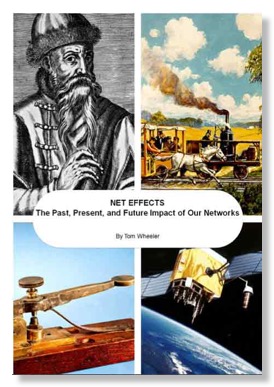
Net Effects: The Past, Present & Future Impact of Our Networks was released along with a related speech delivered yesterday at his alma mater, The Ohio State University. Net Effects is also available as a free eBook on Kindle and Scribd. The eBook comes out of research the Chairman began compiling while he was awaiting Senate confirmation. Ms. Sohn adds,
Net Effects looks at the history of three network revolutions – the printing press, the railroad, and the telegraph and telephony – and how the fourth network revolution – digital communications – will be informed by those experiences. It was this process that led the Chairman to develop what he calls the three “prisms” for looking at communications policy: ensuring that our networks promote economic growth; preserving the fundamental values that have been the foundation of our communications; and enabling the public purpose benefits of our networks. The speech shares many of the same themes as Net Effects.
Near the end of the book is the following discussion:
A similar demand for dispatch should apply to the agency’s regulatory activities. The regulatory processes of the FCC have been criticized by some as being too opaque and cumbersome. At the same time, however, this is the agency that moved expeditiously after being given spectrum auction authority in 1993 and with similar dispatch to meet all the deadlines in the implementation of the 1996 Telecommunications Act. Investigating how the agency can operate quickly and smoothly under the procedural requirements of the Administrative Procedure Act (APA) should be a priority.
One key component of the FCC’s administrative process is to focus like a laser on a fact- based, data-driven process. The goal of the agency’s rulemakings should be to begin with a rebuttable presumption and invite submission for the record of data that either supports or refutes the proposition. It is a simple, yet powerful concept that should be the FCC’s North Star; facts evidenced by supporting data.
I fully agree!
Free the Spectrum >95 GHz!

Your blogger’s comments on Docket 13-259, the IEEE-USA petition to FCC asking that technology greater than 95 GHz be declared “new technology” subject to timely consideration under Section 7 of the Communications Act are now posted on the FCC site. As of this writing, also posted as early filings are comments from IEEE 802 and from David Britz, a former research in the area for AT&T.
If you are interested in facilitating the introduction of commercial technology above 95 GHz, presently forbidden by law in the US and facing multiyear case-by-case deliberations, you may wish to consider telling FCC whether you agree with the points made in the above comments. Feel free to disagree on issues. Heck, feel free to say that use of spectrum above 95 GHz is not even in the “public interest” -- if that is what you believe.
Note to those interested in passive uses such as radio astronomy and remote sensing: bands for such uses are already allocated and protected and are not under consideration here for nonpassive use. The issue here is actual access to bands that already have fixed and mobile allocations but have no FCC service rules.
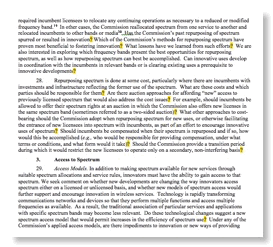
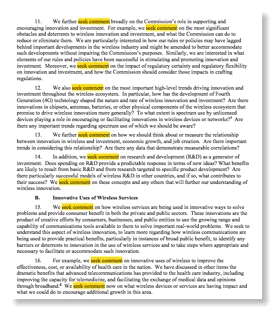


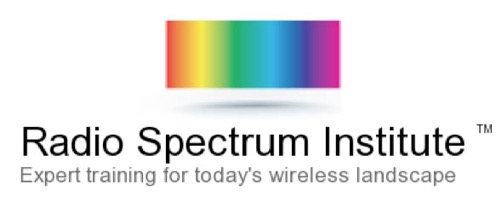


![Validate my RSS feed [Valid RSS]](valid-rss-rogers.png)

